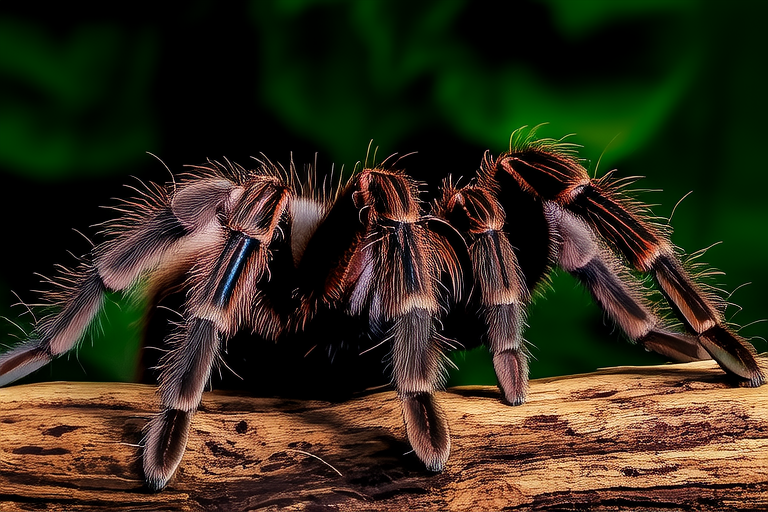5 Surprising Facts About Tarantulas That Will Blow Your Mind
Welcome to the fascinating world of tarantulas, where every step you take seems to lead deeper into mystery and intrigue. These colossal spiders, with their dense, hairy bodies and leg spans that can reach up to ten inches, have long captured the imagination of both the curious and the fearful. Despite their intimidating appearance, tarantulas are a testament to the diversity and wonder of our planet’s wildlife. From the bustling markets of South America to the quiet corners of North American deserts, these creatures have woven themselves into the fabric of many cultures, often symbolizing both fear and fascination. In this article, we will uncover five surprising facts about tarantulas that will leave you in awe of these remarkable arachnids.
Fact 1: Tarantulas Have Hairs That Can Sting
One of the most surprising features of tarantulas is their ability to defend themselves with specialized hairs on their abdomen called urticating hairs. These tiny, barbed hairs are designed to irritate the skin or eyes of potential predators. When threatened, a tarantula rubs its hind legs against its abdomen to dislodge these hairs, which then float through the air and embed into the attacker. This defense mechanism is particularly effective against mammals and birds, as it can cause severe irritation, inflammation, and even temporary blindness. The hairs are so potent that they have been known to cause allergic reactions in humans, making them a formidable weapon in the tarantula’s arsenal.
Fact 2: Tarantulas Are Not Poisonous, But They Are Venomous
Contrary to popular belief, tarantulas are not poisonous. While they do possess venom, it is primarily used to subdue prey rather than as a defensive measure. Their venom is mild compared to other spiders, and it typically only causes minor irritation in humans, similar to a bee sting. However, their venom does serve a crucial purpose in hunting. Tarantulas inject venom into their prey to immobilize them before consuming them. This venom acts as a neurotoxin, disrupting the nervous system of smaller insects and invertebrates, allowing the tarantula to feast undisturbed.
Fact 3: Tarantulas Can Regenerate Lost Limbs
Tarantulas possess an incredible regenerative ability that allows them to regenerate lost limbs. This process, known as autotomy, occurs when a tarantula sheds its exoskeleton, or molts. During this period, the spider can regrow any missing appendages, including legs. The regeneration process takes several molts, and the new limb will gradually grow back to its full size. This remarkable adaptation ensures that tarantulas can survive injuries that would be fatal to many other species. It also highlights the resilience of these creatures, allowing them to continue thriving even after significant trauma.
Fact 4: Tarantulas Communicate Through Vibrations
While tarantulas may not have the vocal cords of more complex animals, they have developed an intricate method of communication through vibrations. By tapping their feet on the ground or shaking their webs, tarantulas can send messages to one another over distances. These vibrations can convey a variety of signals, from warnings of danger to invitations for mating. This form of communication is especially important during courtship, where males perform elaborate dances to attract females. The sensitivity of a tarantula’s legs to these vibrations is remarkable, allowing them to detect even the slightest movements in their environment.
Fact 5: Tarantulas Are Lifespan Champions Among Spiders
When it comes to longevity, tarantulas reign supreme among spiders. While most spider species live for just a few years, some tarantulas can survive for decades. For instance, the Mexican red-knee tarantula has been known to live for over 30 years in captivity, with some individuals reaching ages of up to 40 years. This extended lifespan is attributed to their relatively slow metabolism and the fact that they do not need to hunt frequently. Their ability to survive for such long periods makes tarantulas one of the longest-lived creatures in the animal kingdom, providing ample time for them to explore and adapt to their environments.
Conclusion: The Unique Marvels of Tarantulas
Tarantulas are truly a marvel of nature, combining fierce defenses, regenerative abilities, and an impressive lifespan. Each of these characteristics contributes to their unique place in the ecosystem and their enduring appeal to those who study and appreciate the natural world. Whether you’re captivated by their ability to communicate through vibrations or intrigued by their potent defensive hairs, there’s no denying the fascination that tarantulas hold. As we continue to learn more about these creatures, it becomes increasingly clear that they are not just fearsome predators but also adaptable survivors with much to teach us about resilience and survival. So next time you encounter a tarantula, remember that you’re witnessing a creature with a rich and complex history, one that continues to surprise and inspire those who dare to look closer.
